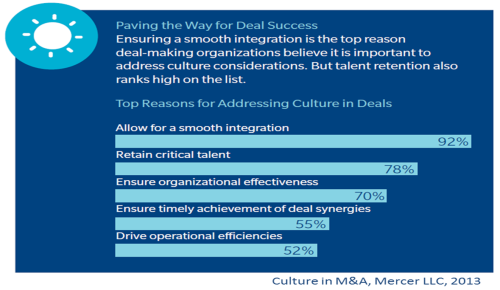
Focusing on diversity in the workplace is an essential step in building a great culture. Advancing gender diversity is a key focus area that organizations should look to, armed with the knowledge that there is still significant progress to make before most workplaces achieve true gender equality. Women are still significantly underrepresented at all levels in the workforce worldwide. Mercer’s 2013 Human Capital Report found that only 60%-70% of the eligible female population participates in the global workforce, while male participation is in the high 80’s. In a recent diversity study by Mercer based on 178 submissions from 164 companies in 28 countries covering 1.7 million employees, Mercer explores this issue and proposes solutions. Three key facts emerged from Mercer’s data:
- Women continue to trail men in overall workforce participation and in representation at the professional through executive levels
- Current female hiring, promotion, and retention rates are insufficient to create gender equality over the next decade
- Current talent flows will move more women into top roles over the next decade but not in North America
 How can organizations change their approach to diversity in a way that effectively combats these gaps? Mercer’s study highlights the current key drivers of gender diversity, aiming to help organizations understand what drives diversity the most and help focus their approach.
How can organizations change their approach to diversity in a way that effectively combats these gaps? Mercer’s study highlights the current key drivers of gender diversity, aiming to help organizations understand what drives diversity the most and help focus their approach.
The data show that organizations who have broad and holistic approaches to support female talent have more comparable talent flows for women and men than those who do not. Additionally Mercer finds that formal accountability has little significance on increasing gender diversity when removed from real leadership engagement. At organizations where leaders are active and engaged in diversity programs, more women are present throughout the organization, in top leadership roles, and there is more equality in talent flows between men and women. Another key driver of gender diversity is that active management of talent creates more favorable results than traditional diversity programs that are put in place to support women’s needs. Organizations that actively manage pay equity vs. making passive commitments ensure that women and men have equal access to profit and loss responsibilities, and proactively support flexible work arrangements driving gender equality at a greater rate than those with traditional diversity programs. Nontraditional solutions and innovative programs impact organizations long- term ability to retain female talent. Specifically, customized retirement solutions and health related programs have been successful in helping organizations to better attract, develop and retain female talent.
Mercer points out a disappointing statistic from the World Bank, which reports that global labor force participation rates for women ages 15-64 have actually declined over the last two decades. The discrepancy between female and male representation is even higher in top roles. Women make up less than 5% of CEOs at Fortune 500 companies, hold less than 25% of management roles, and just less than 19% of board roles globally. Since the 1980’s leap in pay equality for women things have since stagnated. Clearly new strategies are required. Making sure that women are equal participants in the workforce has broader implications than just fostering great culture. Economists have predicted that eliminating the gap between male and female employment rates could boost GDP in the U.S by 5%, in Japan by 9%, in the UAE by 12%, and in Egypt by 34%.
Organizations can take reports such as Mercer’s and use them as a roadmap. The key drivers of gender diversity listed there can easily be leveraged as a reference when identifying you own diversity strategies and areas of focus. For a more expanded list of ways organizations can create greater diversity, take a look at Mercer’s full report.
















